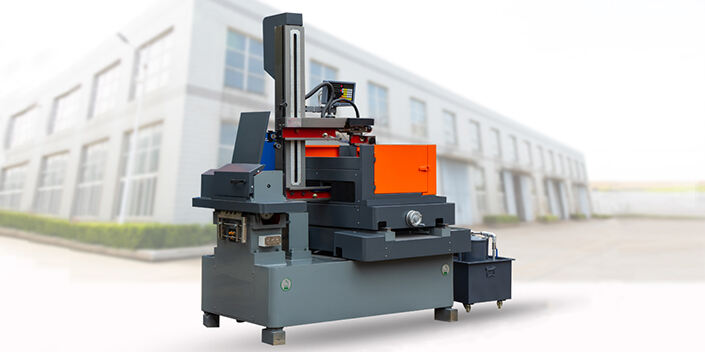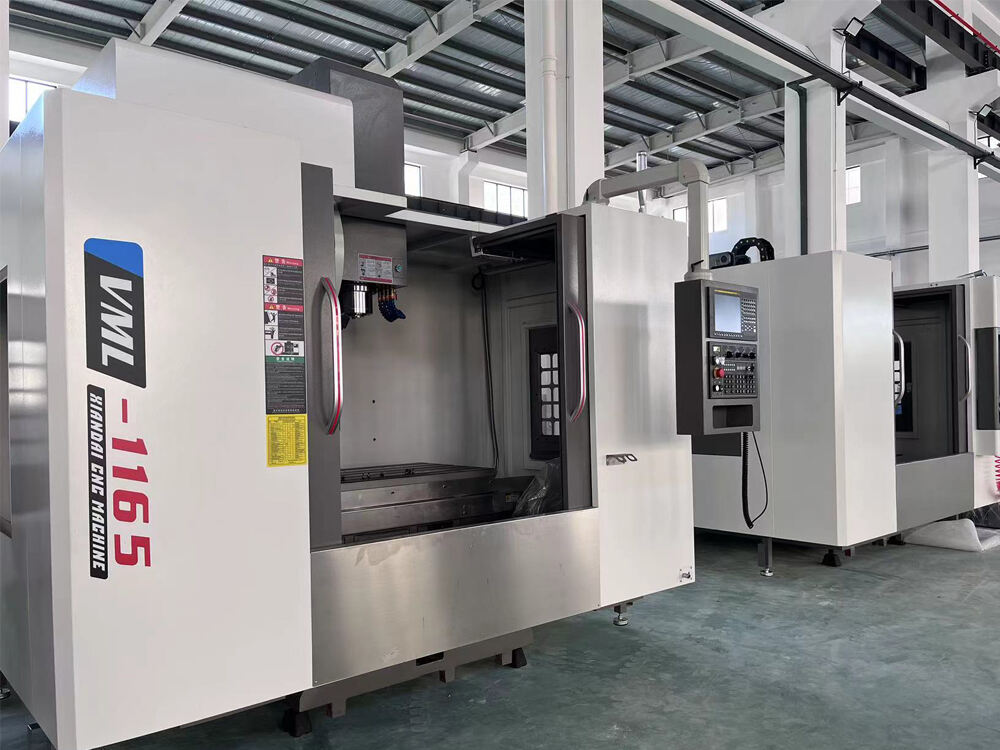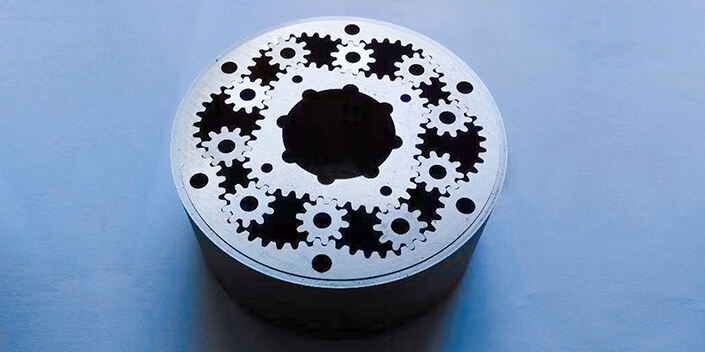Fundamentals of Complex Contour Turning
Defining Contour Turning in Metalwork
Contour turning refers to the shaping of materials along curved paths, which is crucial for creating complex geometries in metalwork. Unlike traditional straight turning, contour turning involves manipulating the workpiece to follow a precise curved path, allowing for intricate designs and profiles. This technique employs a rotating workpiece and a stationary cutting tool, facilitating detailed designs that standard turning cannot achieve. The ability to craft components with precision makes contour turning indispensable in industries requiring complex geometrical configurations.
Key Differences from Standard Turning
Contour turning distinguishes itself from standard turning primarily through its adaptability to varying curves and angles. While standard turning focuses on producing cylindrical shapes, contour turning allows the machining of designs with curves, accommodating intricate profiles. This adaptability grants superior versatility in design, especially important in applications requiring complex parts, such as automotive and aerospace components. The primary advantage lies in its ability to go beyond the limitations of cylindrical shapes, providing precision in creating tailored components with unique designs.
Role of CNC Technology in Precision
CNC technology significantly enhances the precision of contour turning operations. It utilizes computer algorithms to guide tooling paths accurately, reducing human error and improving repeatability. This technological advancement in precision metalworking is crucial for achieving consistency in high-quality production. With CNC systems, intricate designs are executed with notable accuracy, allowing machinists and engineers to maintain tight tolerances and produce complex geometries efficiently. As a result, CNC implementation in contour turning has revolutionized the machining process, elevating operational capabilities and quality standards.
Advanced Techniques for Intricate Shapes
Multi-Axis Toolpath Strategies
Multi-axis machining enhances the ability to create intricate shapes by allowing simultaneous movement along multiple axes. Unlike traditional 3-axis machines, multi-axis systems, such as those used in 5-axis machining, enable the tool to approach the workpiece from multiple directions, improving precision and design flexibility. This advancement is crucial for parts that require complex geometries, such as aerospace or automotive components, where seamless and continuous cutting paths are critical. By maximizing spatial freedom during machining, manufacturers can produce more sophisticated designs with superior precision, all in one operation, thus boosting efficiency considerably.
Combining Turning with Wire EDM Finishing
Integrating contour turning with wire EDM (Electrical Discharge Machining) offers a synergistic approach to achieving high precision and intricate details, especially in hard materials. While contour turning shapes the workpiece, wire EDM uses electrical discharges to cut materials with exceptional accuracy. This method is particularly beneficial in industries where complex shapes and tight tolerances are mandatory, such as mold making. The combination allows for the completion of complex parts with superior finish and geometric specificity that traditional methods struggle to achieve, thereby expanding the possibilities in precision metalworking.
- The ability of wire EDM to handle hard materials with high precision complements contour turning processes.
- The integration enhances the overall detail and accuracy of the finished part by providing a secondary refining step.
Compensating for Material Springback
Compensating for material springback is fundamental in contour turning to achieve accurate dimensions and well-fitted components. Material springback refers to the elastic behavior that causes materials to revert to their original shape after deformation, leading to potential dimensional inaccuracies post-machining. Understanding the elastic properties of different materials, engineers implement compensatory strategies, like altering the toolpath or adjusting machining parameters, to offset these effects. These strategies are vital in ensuring the final product meets the desired specifications and structural integrity, thereby enhancing the overall quality of the production process.
- Key considerations involve evaluating material characteristics and applying predictive models to anticipate and counteract potential deviations.
- Implementing these adjustments is crucial in applications where accuracy is paramount, such as in the automotive and aerospace sectors.
Material Considerations & Tool Selection
Hardened Steels vs. Ductile Alloys
Selecting the appropriate material significantly influences both the durability and machining efficiency of a project. Hardened steels are renowned for their high wear resistance, which makes them ideal for tough applications where longevity is key. On the other hand, ductile alloys are prized for their excellent machinability and versatility, allowing for more intricate designs and adjustments. Choosing between these materials depends on the specific requirements of a project, where durability might favor hardened steels, while flexibility and range of application would lean towards ductile alloys.
CBN vs. PCD Cutting Tools
In contour turning, the selection between Cubic Boron Nitride (CBN) and Polycrystalline Diamond (PCD) cutting tools is crucial for achieving optimal results. CBN tools are highly durable and excel when machining hard materials, making them perfect for applications where longevity under tough conditions is necessary. Conversely, PCD tools are known for their exceptional sharpness, providing fine details and high-quality surface finishes. The choice between CBN and PCD largely depends on the specific needs and priorities of the turning project, considering factors such as material hardness and desired level of detail.
Coolant Strategies for Heat Management
Effective coolant strategies are essential in machining as they play a crucial role in managing heat, which directly impacts tool life and the quality of the finished part. By reducing thermal deformation, appropriate cooling ensures both longevity of the tool and precision in the part's dimensions. Choosing the right type of coolant can also enhance surface finish and prevent issues like workpiece warping. Therefore, it is imperative to tailor coolant strategies to the specific material and machining operation to maintain optimal performance and achieve high-quality finishes.
Overcoming Artistic Metalwork Challenges
Vibration Control in Thin-Walled Pieces
Minimizing vibrations is essential when working with thin-walled metal pieces. These delicate structures are prone to resonance during machining, which can adversely affect precision and quality. To combat this challenge, businesses can implement various dampening solutions. Whether using specialized vibration dampers, modifying the machine setup, or stabilizing the workpiece, these techniques can significantly enhance output quality. Ensuring stability throughout the machining process allows for precise contouring and reduces errors.
Achieving Mirror Finishes on Curved Surfaces
Achieving mirror finishes on curved surfaces in metalwork demands careful technique. This involves meticulous attention to abrasive methods and finishing processes to ensure a flawless surface without imperfections. Techniques such as fine grinding and polishing are essential to obtaining the desired shine and smooth texture. Knowledge of the right abrasives, along with continuous monitoring, is crucial for success in artistic metalwork, where aesthetics are just as important as structural integrity.
Electrical Discharge Machining Integration
Integrating electrical discharge machining (EDM) with contour turning offers a significant advantage in crafting complicated profiles and intricate features. EDM techniques are valued for their precision, especially in projects requiring detailed and complex machining. This integration not only elevates productivity but also expands the scope of achievable designs, enabling more creative and sophisticated metalwork. By harnessing the unique properties of EDM, manufacturers can push the boundaries of what's possible in artistic metalwork, creating pieces that stand out for their precision and intricacy.
Applications in Modern Metal Artistry
Sculptural Elements in Architectural Metalwork
The use of complex contour turning techniques is essential in the creation of sculptural elements that enhance architectural structures. These techniques allow for unparalleled design flexibility, making it possible to produce intricate shapes and forms that add both aesthetic value and structural integrity. In modern architecture, such metalwork can be seen in facades, columns, and interior design elements, where the precision and creativity offered by contour turning enrich the artistic expression of the buildings. These sculptural elements are not solely decorative; they also contribute to the building's overall stability and support.
Custom Automotive Embellishments
In the automotive industry, complex contour turning plays a crucial role in the production of custom embellishments that distinguish vehicles aesthetically and functionally. Automotive craftsmanship now frequently involves producing unique designs for components such as grills, trims, and engine parts, using advanced metalworking techniques. These intricate metal designs not only elevate the visual appeal of vehicles but also can enhance performance through better aerodynamics or reduced weight. As the demand for personalized vehicle elements grows, contour turning's precision and versatility become an invaluable asset to automotive manufacturers.
Precision Instrument Components
Manufacturing precision instruments heavily relies on contour turning to produce components with extremely high accuracy. This technique is vital in fields such as medical devices and aerospace, where the ability to maintain tight tolerances is non-negotiable. For example, components for surgical instruments or aerospace navigation systems must conform to strict specifications to ensure reliability and safety. The precision achievable through contour turning ensures that these critical parts perform their intended functions without fail, highlighting the importance of advanced metalworking practices in producing high-quality, dependable equipment.





